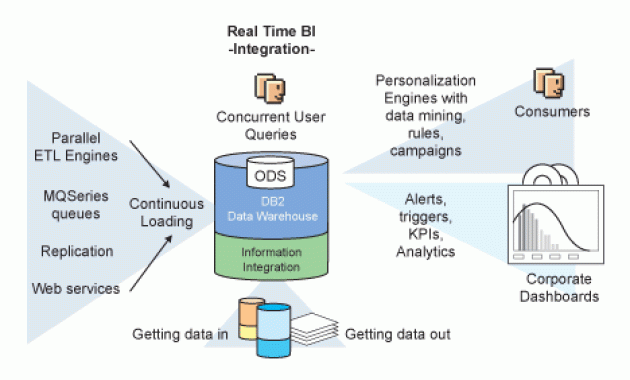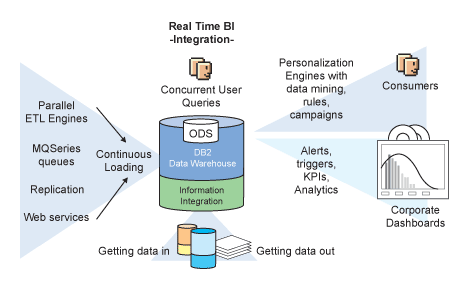
Enhance Business Intelligence Software for Real-Time Performance: A Deep Dive
In today’s fast-paced business environment, the ability to make informed decisions quickly is paramount. This is where business intelligence (BI) software comes into play. However, the true power lies in the ability to leverage BI software for real-time performance analysis. This article will explore how to enhance business intelligence software for performance in real time, providing actionable insights and strategies.
The Imperative of Real-Time BI
Traditional BI systems often rely on batch processing. This means data is analyzed in intervals, such as daily or weekly. This approach can lead to delays in identifying critical trends or issues. Real-time BI, on the other hand, offers a significant advantage. It provides up-to-the-minute insights. This enables businesses to respond to changes and opportunities immediately. It’s no longer sufficient to know what happened yesterday. The ability to understand what is happening *now* is crucial.
The benefits of real-time BI are numerous. These include:
- Faster Decision-Making: Real-time data allows for quicker decisions.
- Improved Operational Efficiency: Immediate insights can streamline processes.
- Enhanced Customer Experience: Real-time understanding of customer behavior.
- Increased Competitive Advantage: Staying ahead of market shifts.
Key Features to Enhance BI Software
To effectively enhance business intelligence software for performance in real time, several key features are essential. These features enable the software to collect, process, and present data in a timely manner.
Data Integration and Connectivity
The foundation of real-time BI is robust data integration. The software needs to connect to various data sources. These sources include databases, cloud services, and IoT devices. The ability to ingest data from diverse sources is critical. This ensures a comprehensive view of the business. Modern BI tools offer connectors for a wide range of data sources. This simplifies the integration process. The software must support real-time data streaming. This is vital for continuous data updates.
Real-Time Data Processing
Once data is integrated, it needs to be processed in real-time. This involves several steps. These steps include data cleansing, transformation, and aggregation. The software should have the processing power to handle large volumes of data. This is without compromising speed. Techniques like in-memory processing can significantly improve performance. In-memory processing stores data in RAM. This allows for faster access and analysis. The software must also support complex calculations. These calculations are necessary for advanced analytics.
Interactive Dashboards and Reporting
Data visualization is key to understanding real-time information. The software must provide interactive dashboards. These dashboards allow users to explore data. Users can drill down into details. They can also create custom reports. Dashboards should be customizable. This allows users to tailor the information to their specific needs. Reports should be generated automatically. This reduces manual effort. They should also be easily shareable. This facilitates collaboration across teams.
Alerting and Notification Systems
Real-time BI is not just about seeing the data. It’s about acting on it. Alerting systems are crucial. These systems notify users of critical events or anomalies. Users can define rules. These rules trigger alerts based on specific conditions. For example, an alert might be triggered if sales drop below a certain threshold. Notifications can be delivered via email, SMS, or other channels. This ensures timely awareness of important events. The system should provide context for alerts. This helps users understand the issue and take appropriate action.
Strategies to Enhance BI Software Performance
Implementing real-time BI requires more than just the right software. It also involves the right strategies. These strategies ensure optimal performance and effectiveness.
Choosing the Right BI Tool
The selection of the BI tool is a critical first step. The tool should offer real-time capabilities. These capabilities should include data integration, processing, and visualization. Consider the size and complexity of your data. Also, consider your specific business needs. Look for tools that offer scalability and flexibility. This is important for future growth. Evaluate the tool’s user interface. It should be intuitive and easy to use. Research the vendor’s reputation and support. This is essential for long-term success. [See also: Choosing the Right BI Tool: A Comprehensive Guide]
Optimizing Data Infrastructure
The underlying data infrastructure plays a crucial role. Ensure your infrastructure can handle real-time data streams. This includes databases, servers, and network connectivity. Consider using cloud-based solutions. Cloud solutions offer scalability and flexibility. Optimize your database queries. This minimizes data retrieval times. Implement data caching. This stores frequently accessed data for faster access. Regularly monitor your infrastructure. This identifies and resolves performance bottlenecks.
Data Governance and Quality
Real-time BI relies on accurate and reliable data. Establish data governance policies. These policies define data quality standards. They also outline data management procedures. Implement data cleansing processes. This ensures data accuracy. Regularly audit your data. This identifies and corrects errors. Ensure data security. Protect sensitive information from unauthorized access. [See also: Data Governance Best Practices for BI]
Training and User Adoption
The success of real-time BI depends on user adoption. Provide comprehensive training to your users. This ensures they understand how to use the software. Communicate the benefits of real-time BI. This increases user engagement. Develop a user-friendly interface. This makes it easier for users to access and analyze data. Encourage feedback from users. This helps improve the software and its usage.
Real-World Applications: How Businesses Utilize Real-Time BI
Many businesses are already leveraging real-time BI. These are some real-world examples. They illustrate the power of this technology.
Retail
Retailers can track sales data in real-time. They can monitor inventory levels. They can also identify popular products. This allows them to make quick decisions. They can adjust pricing. They can also optimize promotions. They can also manage inventory effectively. This leads to increased sales and improved customer satisfaction. The ability to react to trends is crucial. This is especially true in a fast-moving retail environment.
Manufacturing
Manufacturers can monitor production lines. They can identify potential issues. They can also optimize processes. They can use real-time data to track machine performance. They can also monitor quality control. This reduces downtime and waste. It improves overall efficiency. Real-time data helps manufacturers make informed decisions. These decisions can be about resource allocation and production planning.
Healthcare
Healthcare providers can monitor patient data in real-time. They can track vital signs. They can also monitor treatment outcomes. This allows them to provide better patient care. They can also identify potential health risks. The ability to respond quickly can save lives. Real-time insights support better decision-making. They help healthcare providers optimize resources. They also improve patient outcomes.
Financial Services
Financial institutions can monitor market trends in real-time. They can detect fraudulent activities. They can also manage risk effectively. They can use real-time data to track customer behavior. They can also tailor their services. This leads to increased customer satisfaction and loyalty. Real-time insights are essential in the financial sector. This is because they help institutions stay competitive.
The Future of Real-Time BI
The future of real-time BI is promising. There are several trends that will shape its evolution.
Artificial Intelligence and Machine Learning
AI and machine learning (ML) will play a larger role in real-time BI. These technologies can automate data analysis. They can also provide predictive insights. They can identify patterns and anomalies. This will enable faster and more accurate decision-making. AI and ML will enhance the capabilities of business intelligence software for performance in real time. [See also: AI and ML in Business Intelligence: The Next Frontier]
Edge Computing
Edge computing will bring data processing closer to the source. This reduces latency. It improves the speed of real-time insights. This is particularly important for IoT devices. It is also important for applications where speed is critical. Edge computing will further enhance the capabilities of business intelligence software for performance in real time.
Data Democratization
Data democratization will continue to grow. This will make real-time data more accessible. It will also make it more usable for all users. This will empower more people to make data-driven decisions. This will lead to better business outcomes. The goal is to make business intelligence software for performance in real time more accessible to everyone.
Conclusion: Harnessing the Power of Real-Time BI
To truly enhance business intelligence software for performance in real time, businesses must embrace a holistic approach. This means choosing the right tools. It also means optimizing data infrastructure. It means establishing data governance. It also means fostering user adoption. By implementing these strategies, businesses can unlock the full potential of real-time BI. They can gain a competitive edge. They can also drive better business outcomes. The ability to act quickly is more critical than ever. The future of business is real-time.
In summary, the ability to enhance business intelligence software for performance in real time is a key differentiator. It offers significant advantages. It empowers businesses to make faster, more informed decisions. It enables them to thrive in today’s dynamic market.

